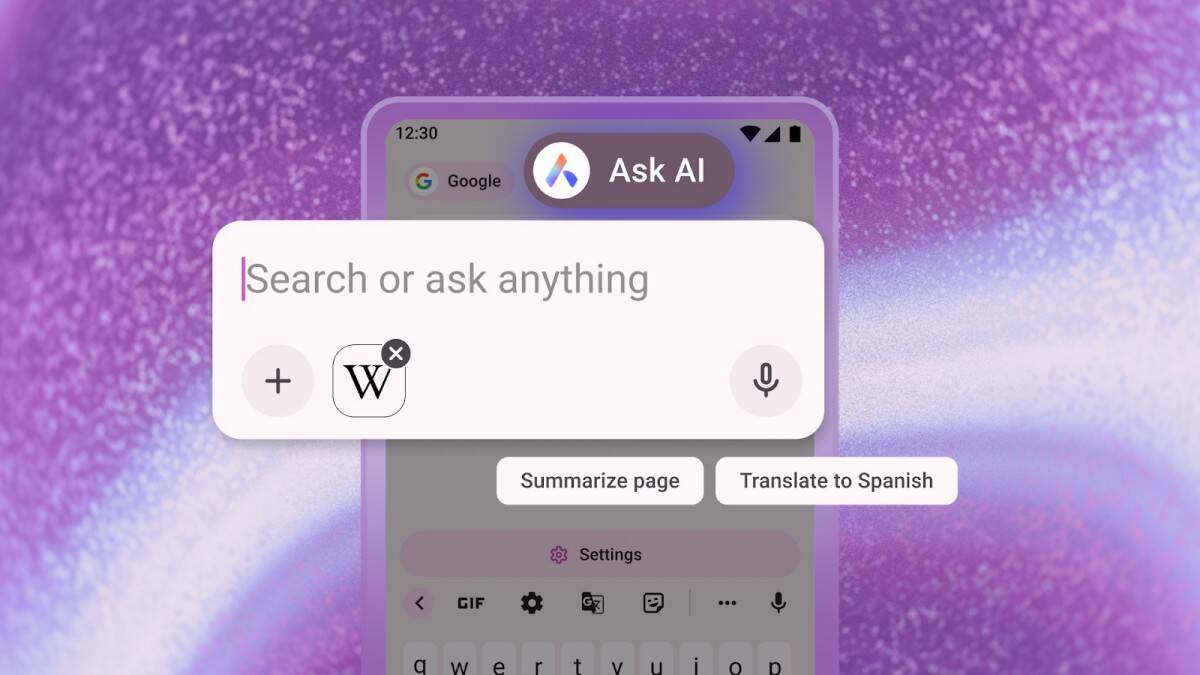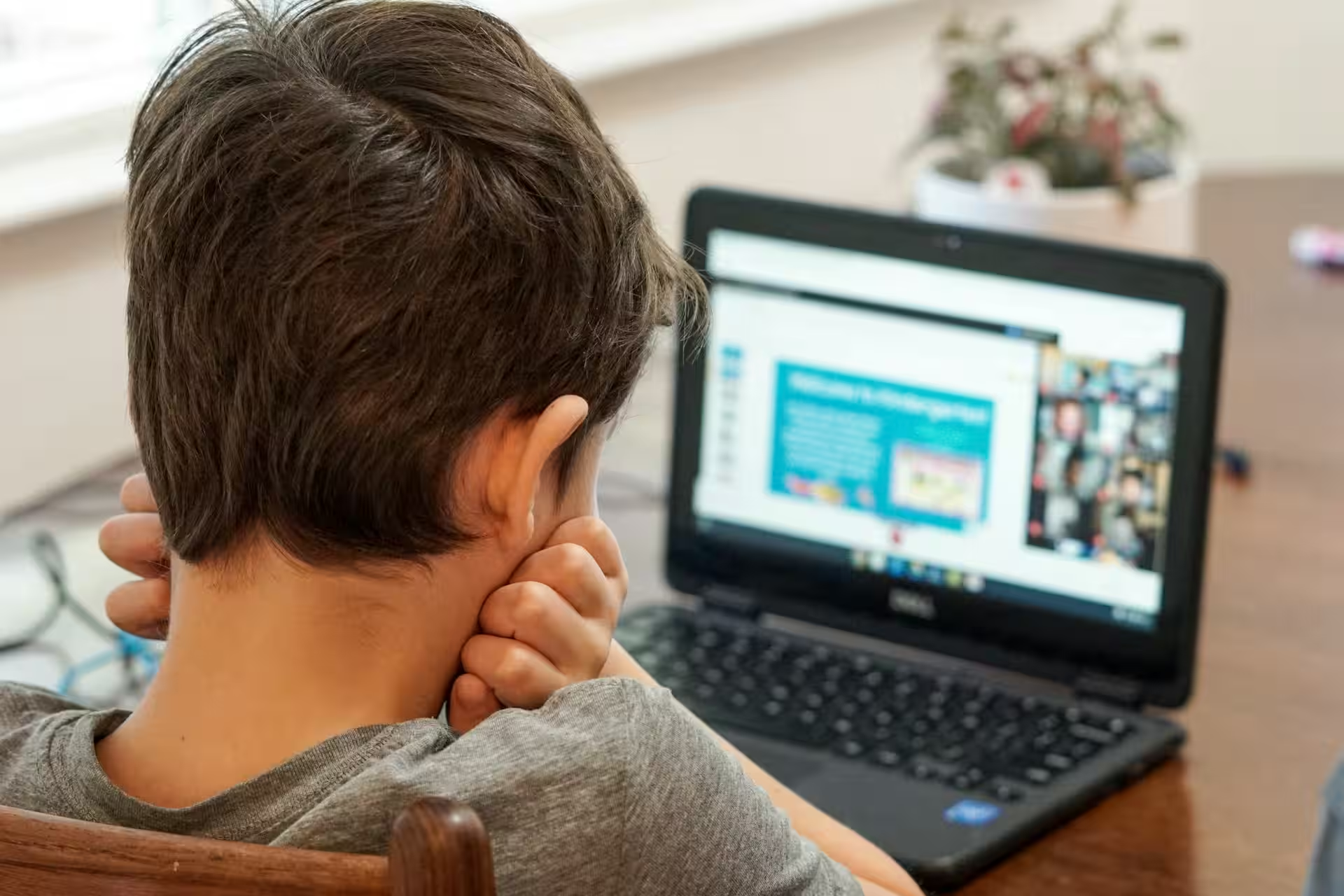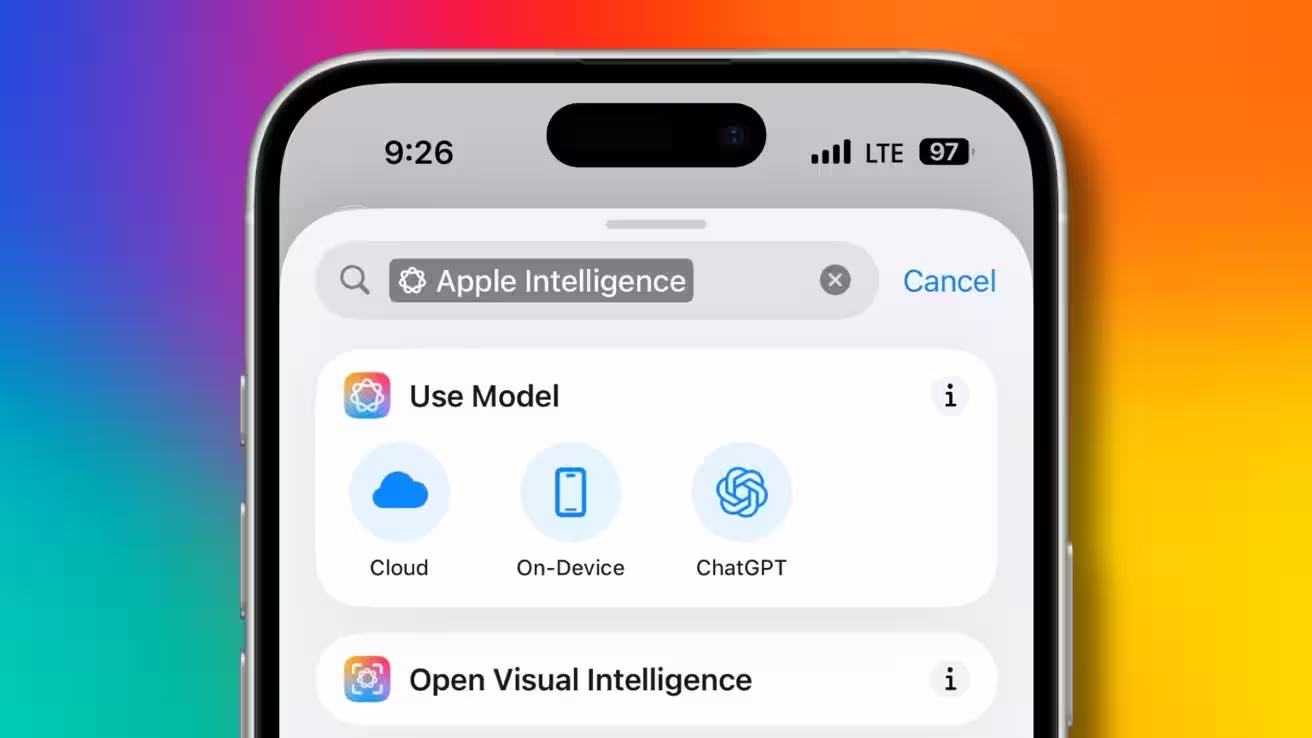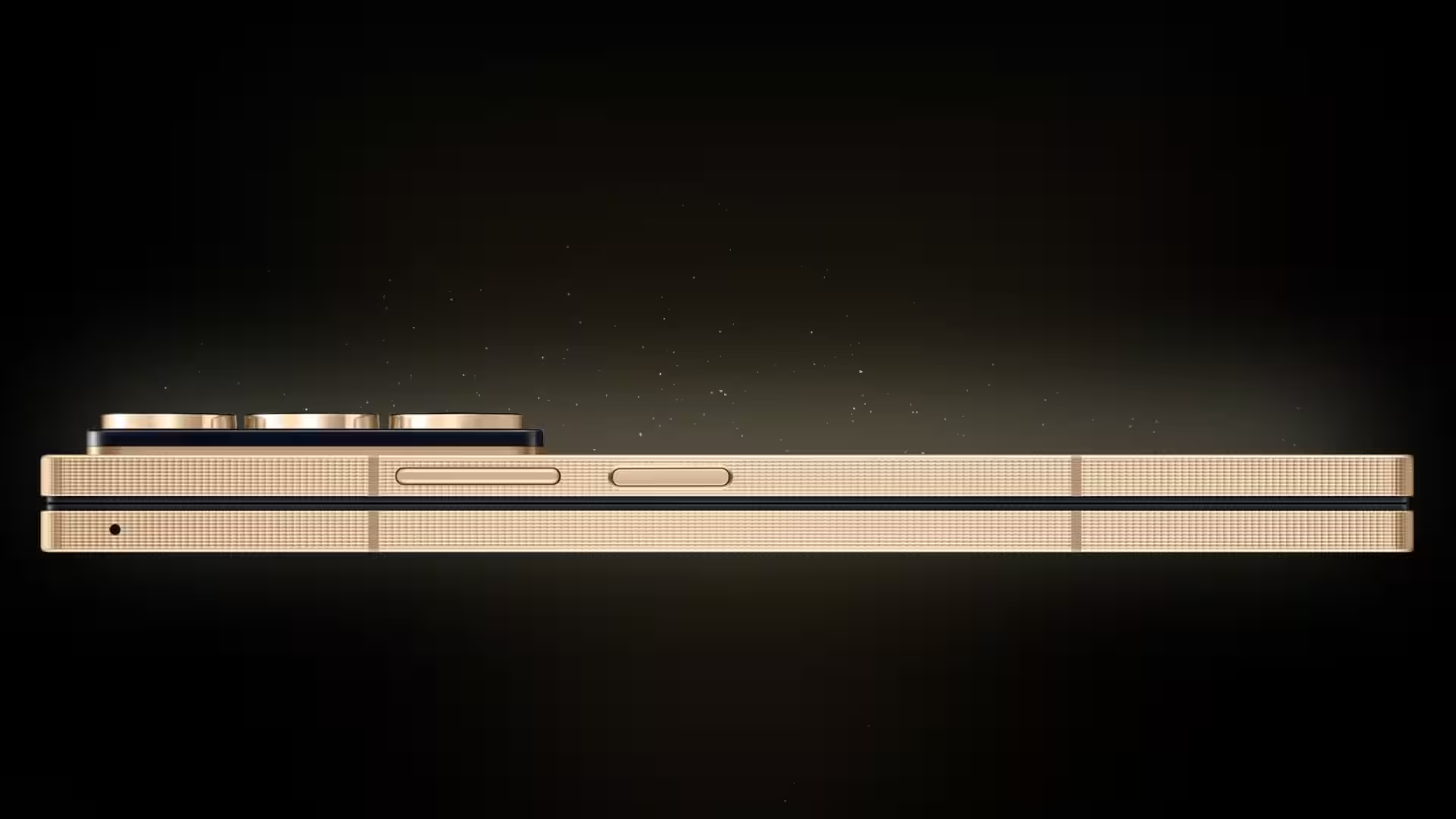Google Photos: How to use the new web editing tools
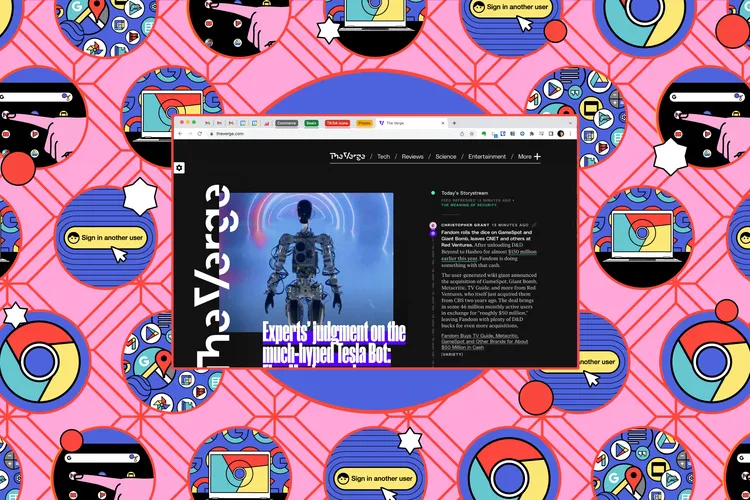
Google Photos — it’s not just a place to store and sort photos and videos — both the web interface and mobile apps feature a host of image editing tools so you can beautify and enhance your shots before sharing them with the rest of the world.
Google Photos — it’s also a place to store and sort photos and videos — both the web interface and mobile apps feature a host of image editing tools so you can beautify and enhance your images before sharing them with the rest of the world.
Google regularly updates these editing tools, and a major update has just hit the web. There are new features here (some of which were previously only available in the Android app), including preset color profiles and more detailed control over existing features like brightness and contrast adjustments.
All you have to do to try them out — is open your browser and go to Google Photos. Open the image, click the edit button in the top right corner (it looks like a series of sliders), and you’ll be taken to the editing interface, which appears as a sidebar on the right side of the screen.
And you’ll be taken to the editing interface, which appears as a sidebar on the right side of the screen.
There are four (five, if you’re a Google One subscriber) different editing panels available for you to work with, and we’re going to tell you what each one is about. (And yes, some editing options are available exclusively to Google One subscribers; those options will be marked on the screen with a number 1 in a circle.)
Some of the editing options are available exclusively to Google One subscribers; those options will be marked on the screen with a number 1 in a circle.
Proposals
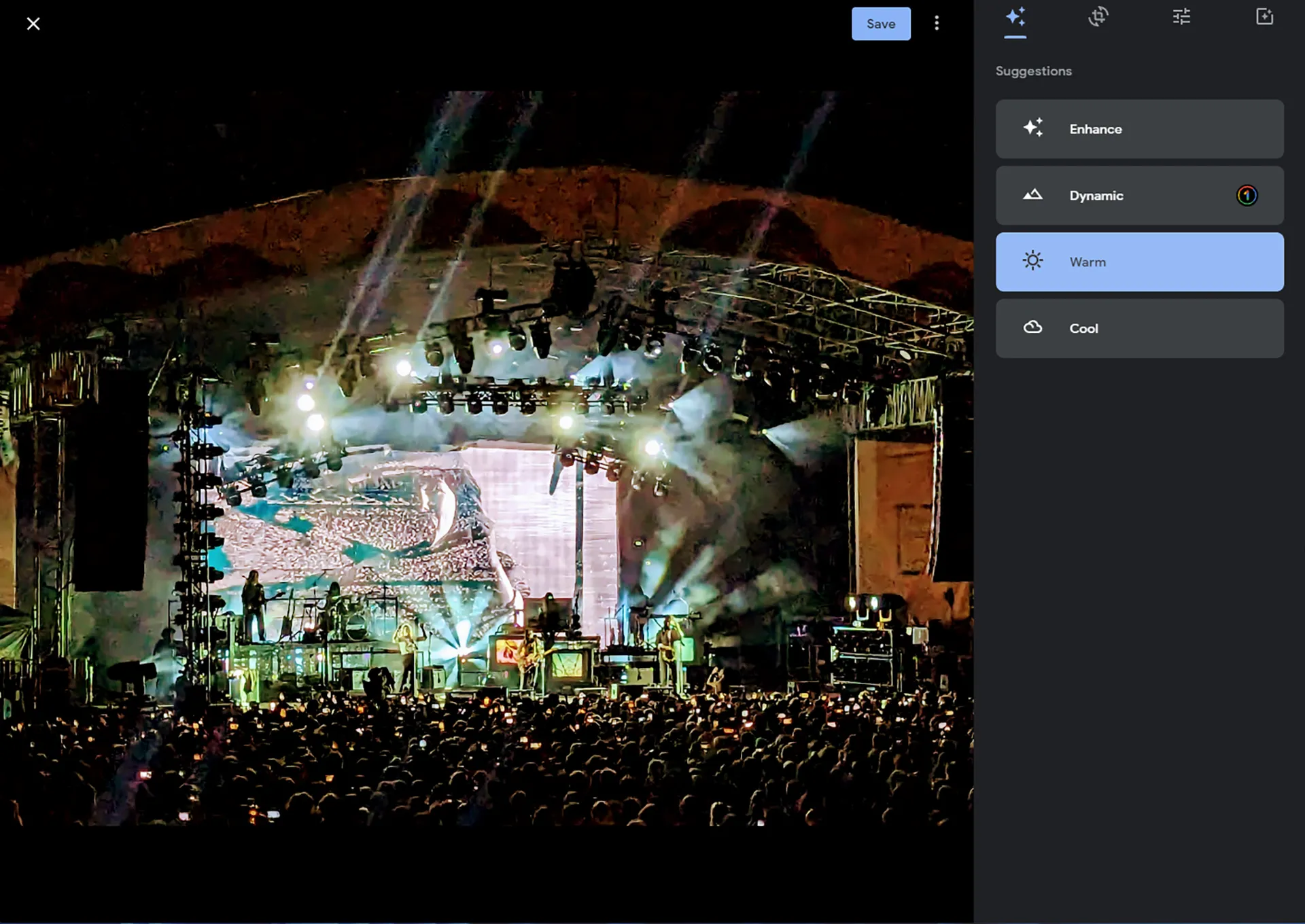
Preferences (asterisk icon) — is a new feature similar to what was part of the Android Photos app. It lists settings that Google Photos thinks will improve the image. Different suggestions will appear for different images depending on their content. For example, update applies a number of optimizations, while warm and cold adjust the overall temperature of the photo.
Cool.
If you’re a Google One subscriber, the choices are wider. Some of these features include Blur, which blurs the background; Color pop, which highlights foreground colors; and Dynamic, which applies HDR processing to highlight details in darker and lighter areas.
You simply click on any of the suggested options to see how they change the appearance of the image, and click again to undo the processing and return to the original look. It’s a useful way to let Google’s analytics algorithms decide how to make your photos look their best.
.
Aspect Ratio
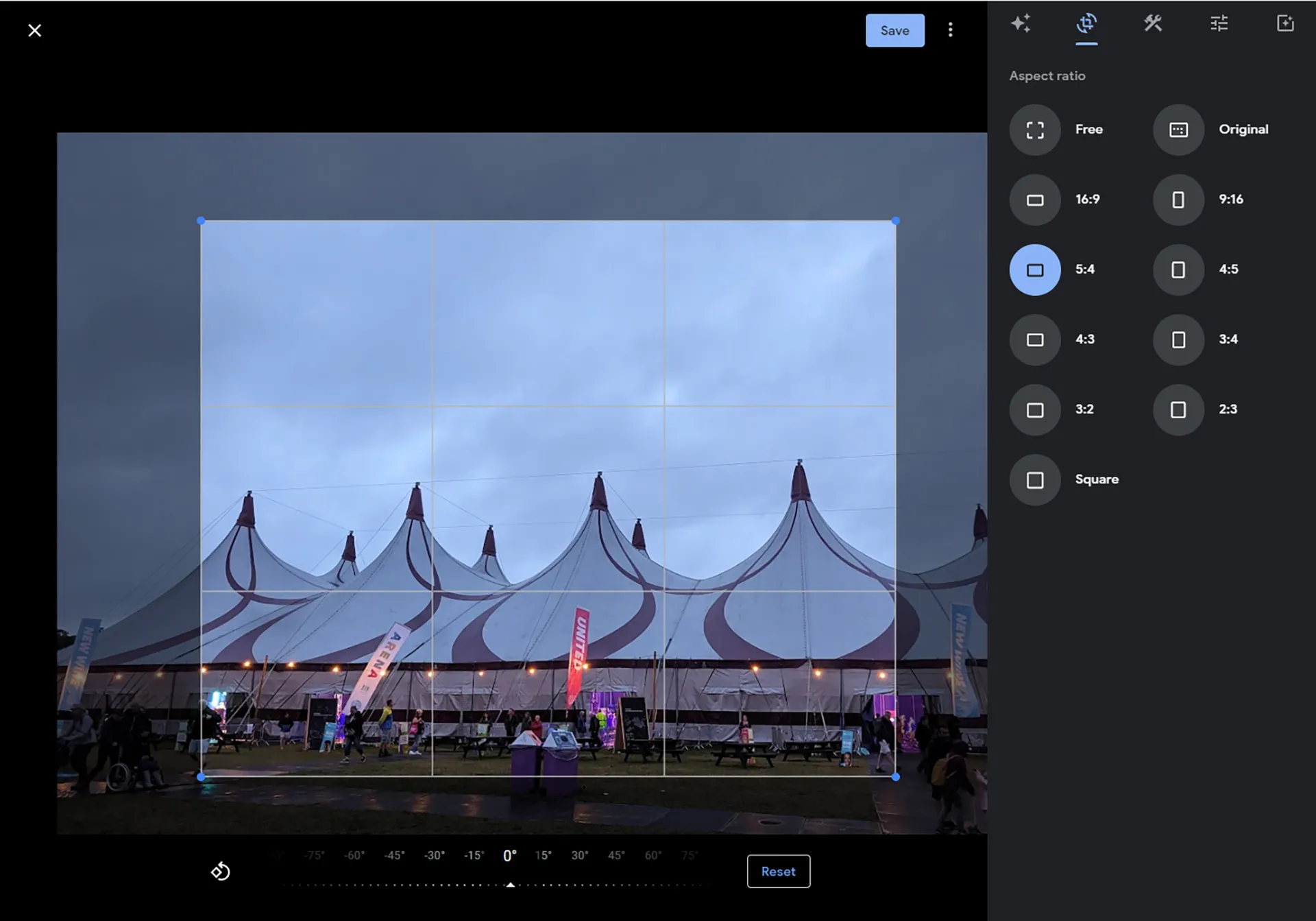
The «Crop» tab (corner markers and arrows) is for cropping the image and rotating it. Cropping was previously available in the editing interface, but now you can select preset aspect ratios, which means you can get the shape and size of the image you want faster.
- Select any of the aspect ratios. If it’s not quite right, use the handles in the corners of the selected element to adjust it.
- Click and drag inside the crop selection window (the cursor will change to a hand icon) to change which part of the image the crop is focused on.
- Click and drag your finger on the bar below the image marked with a series of angles to change the rotation of the image.
- Click the rotate button to the left of the bar to rotate the image 90 degrees counterclockwise.
- Click Reset to undo any changes made on this tab and return to the original cropping and rotation.
Tools

The center tab «Tools» (the hammer and wrench icon) only appears if you’re a Google One subscriber and if Google Photos deems those tools relevant and useful for the image you’ve opened. This new feature really expands the editing capabilities of the Google Photos web app.
This new feature really expands the editing capabilities of the Google Photos web app.
You’ll see different tools for different shots: a portrait shot of a face might offer a tool called Portrait Light, for example, which lets you use an artificial light source, while a landscape photo might give you the Sky tool, with which you can add a “style” such as Radiant or Storm.
Just click the tool you want to use. Usually a slider will appear below the photo, allowing you to change the strength of the effect.
Note that the «Suggestions» tab may also overlap a bit, so you may see some of the same options on both tabs.
Address the following.
Settings

In the Customize tab, you get a long row of sliders that let you change many different characteristics of the image, from its brightness to its hue.
This tab isn’t new, but it has undergone a slight redesign and some new features have been added. These include HDR (to keep very dark and very bright areas of an image visible – unfortunately, this is only available to Google One users) and White Point (to adjust the white balance of a photo). Again, this expands the range of edits you can make right in the browser.
White Point (to adjust the white balance of a photo).
- Click and drag any of the sliders to make changes – the blue line shows where you have above or below the original settings.
- Any changes made are instantly displayed in the image to the left.
- After making changes, the icon next to the slider turns blue.
Click this icon to undo the changes and return to the default value.
For example, you can use highlights to reduce the brightness of lighter areas of an image, or shadows to lighten darker areas.
Filters

The rightmost tab — «Filters» (the little asterisk inside the rectangle) — is carried over from the old interface. These filters change the appearance of an image with a single click-they’re similar to filters you may have played with on Instagram.
- The filters come with a thumbnail image that allows you to preview their effects. Click on any filter to see how it changes the look of the image.
- Click and drag the slider below the image to change the strength of the selected filter.
- Click No to remove the filter and restore the image to its original appearance.
.
When you’re done with all the editing, click Save (top right) to save your changes. If you want to save the updated image as a new file while leaving the original in place, click the three dots next to Save and then Save a copy.
Save a copy.

